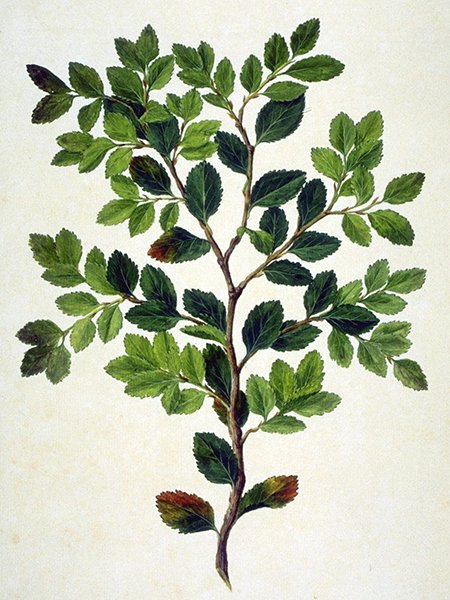Turning of the fagus

ALTHOUGH HE HAD no idea at the time, when botanist Joseph Banks sailed around the world on the HMB Endeavour with Captain James Cook in 1768–71, he discovered trees in South America, New Zealand and Australia that would provide some of the first clues to the processes of plate tectonics and continental drift.
In Australia one of the best known of this group of trees is the beautiful tanglefoot or deciduous beech (Nothofagus gunnii), also commonly known as fagus. It is Australia’s only cold-climate, deciduous tree and its leaves flush with brilliant, autumnal yellows and oranges in April and May each year before they drop. It grows in stands in remote highland regions of the Tasmanian Wilderness World Heritage Area, covering a total area of fewer than 11,000ha; it requires cold winters and more than 1800mm of rain annually. The annual ‘turning of the fagus’ that draws bushwalkers from far and wide to enjoy the spectacle is a fiery reminder of the fact that Tasmania used to be part of the southern supercontinent of Gondwana.
The first clue to this came in January 1769 when Banks collected a sample of a tree, which would later be called Magellan’s beech or Nothofagus betuloides, from Tierra del Fuego on the tip of Patagonia. This ‘southern beech’ was thought to be related to the beeches, oaks and chestnuts of the Northern Hemisphere, although we now know it is a distinct family, possibly related to the birches. The crew of the Endeavour turned up more species of southern beech in Australia and New Zealand, but it wasn’t until the 1830s that another botanist, Joseph Hooker, began to puzzle over the similarities between species such as Magellan’s beech, the myrtle beech from Tasmania and Victoria, and the tawhai or silver beech from New Zealand.

An illustration of the specimen of Magellan’s beech, Nothofagus betuloides, collected by Joseph Banks on the Endeavour in 1769. (Image: Natural History Museum)
We now know that there are about 35 southern beeches: including nine in South America; 18 in New Guinea, New Caledonia and New Britain; and four in New Zealand. Australia has three – the evergreen myrtle beech (Nothofagus cunninghamii) and the Antarctic beech (Nothofagus moorei) in addition to the deciduous beech. Although Antarctica is now smothered with a thick ice cap, fossils show us that southern beeches once grew there too. Of course, the reason all these trees are very similar is that they share an ancestor that once grew across Gondwana, dominating the continent’s temperate forests. The first southern beeches evolved more than 100 million years ago and their living descendants are among the oldest lineages of flowering plants.
The clue as to why Tasmania’s fagus has retained the habit of dropping its leaves in winter lies in this Gondwanan heritage. When Tasmania was much further south it had long periods of winter darkness and so it made sense for trees to drop their leaves to conserve energy – fossils tell us that 35 million years ago N. gunnii was widely distributed across Tasmania. As Australia drifted north, trees with differing winter strategies began to flourish in place of the beech (such as alpine gums with small waxy leaves). The deciduous beech persists in parts of Tasmania where dropping leaves is still a good strategy to protect against winter frost and snow.
Although the deciduous beech is Tasmania’s only cold-climate tree to lose its leaves, there are a few trees further north that do the same thing. The red cedar and white cedar in the rainforests of Queensland and New South Wales are both deciduous over winter, while some tropical eucalypts drop their leaves at the end of the dry season.
This was originally published in the Mar-Apr 2016 issue of Australian Geographic (AG#131).
READ MORE:




